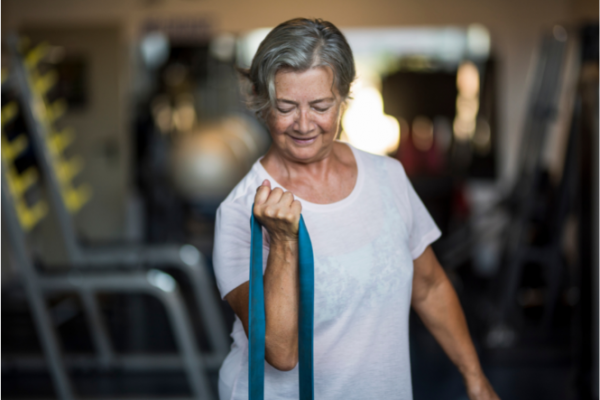Staying active is important for over 65s
Key points about staying active when you're over 65
- Exercise has huge benefits for health and regular physical activity remains just as important as you get older.
- Aim to do physical activity that increases your breathing and heart rate for at least 30 minutes, 5 days a week.
- Try to start off any physical activity slowly and build up gradually to the recommended level.
- You can aim to exercise even if you are frail.

Physical activity can help:
- increase balance and coordination
- increase muscle strength
- prevent falls
- prevent and manage health conditions such as stroke, heart disease, obesity, type 2 diabetes, osteoarthritis, cancers and depression
- reduce the risk of premature death
- improve sleep
- enhance wellbeing and quality of life
- increase social interaction.
But the type and amount of exercise you should do changes as you age. Here are some tips on exercise that is suitable for people over 65.

Image credit: Canva
Doing housework and other daily activities is good for you as they keep you moving and help reduce the time you are sitting down. Don't stretch yourself too much – the key is to do something within your capability. Even small amounts of physical activity can have great benefits on your health.
Aim to do physical activity that increases your breathing and heart rate for at least 30 minutes, 5 days a week. These activities are known as aerobic activities and can be classified into moderate or vigorous intensity.
Moderate intensity exercise
These activities increase your breathing and heart rate slightly but they are noticeable. You can still chat during moderate-intensity activity.
Examples include:
- cycling
- brisk walking
- kapa haka
- stair climbing
- walking
- golf
- housework
- swimming
- playing with grandchildren
- waka ama
- kaumātua line dancing
- water aerobics.
Vigorous-intensity exercise
These activities increase your breathing and heart rate significantly. You are not able to chat during vigorous-intensity activity.
Examples include:
- walking uphill
- heavy digging
- fast lane swimming
- cycling more than 16 km/h
- fast dancing.
Some activities can improve flexibility, balance or resistance. Aim to do 3 sessions of flexibility and balance activities as well as 2 sessions of resistance activities per week.
| Resistance activities | Flexibility activities | Balance activities |
|
|
|
Try to start off any physical activity slowly and build up gradually to the recommended level.
If any of the following applies to you, talk to your doctor before starting or increasing levels of activity:
- you have not exercised regularly in the recent past
- you have one or more health conditions
- you have any injuries.
It is important to be physically active even if you are frail. You can do these safely by:
- checking with your doctor first before starting or increasing physical activity
- speaking to your doctor about whether vitamin D tablets can be beneficial for you
- being as active as possible and reducing sedentary behaviour
- starting off these exercises slowly and building up gradually
- aiming for a combination of low-impact aerobic, resistance, balance and flexibility activities.
Physical activity for older people(external link) Ministry of Health, NZ
Reference
- Physical activity for older people(external link) Ministry of Health, NZ
Credits: Healthify Editorial Team
Page last updated:





